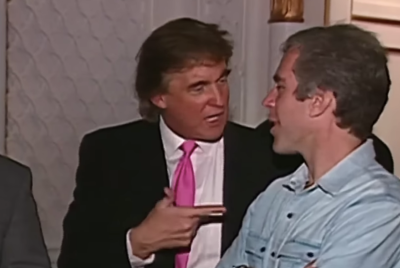'International Embarrassment': US Troops Accidentally Launch Beach Raid In Mexico
US personnel installed restricted-area signs on a Mexican beach after misreading shifting border markers

In what is rapidly becoming a diplomatically explosive episode, US contractors, misidentified as troops, have mistakenly landed on a Mexican beach and declared it a restricted US Department of Defense area, sparking outrage in Mexico and triggering a formal investigation.
The incident unfolded on Monday, 17 November 2025, when a group of armed American personnel arrived by boat at what appears to be Playa Bagdad, a stretch of coastline in northeast Mexico near where the Rio Grande flows into the Gulf of Mexico. According to multiple reports, they then installed six warning signs in both English and Spanish.
The signs read, 'Warning: Restricted Area – U.S. Department of Defense Property', under the authority of 'the commander', forbidding unauthorised entry, photography, and stating that 'if you are found here, you may be detained and searched.'
A Blunder at Sea With Serious Consequences
Mexican naval forces responded swiftly. Videos circulating on social media and in local media show Marines dismantling the intrusive signs and escorting the Americans off the beach without violence.
@internetmexican #stitch with @CentroNoticias The U.S. DOD sent an incursion into Mexican territory, attempting to restrict Mexicans from accessing their own beach. Let’s hope Sheinbaum doesn’t let this slide. #politics #mexicantiktok #news #mexico
♬ original sound - InternetMexican
Mexico's Foreign Affairs Ministry later issued a statement declaring the origin and authority of the signage unclear, emphasising that the beach was indeed within Mexican territory.
In response, Mexican President Claudia Sheinbaum called on the International Boundary and Water Commission (IBWC), a binational body responsible for overseeing treaties governing the US–Mexico border, to arbitrate the dispute.
Sheinbaum stressed that rivers like the Rio Grande shift courses naturally over time, complicating precise territorial demarcation.
Moreover, she firmly reiterated that Mexico would not accept foreign military intervention on its soil, even amid US proposals to strike drug cartels within Mexico.
Pentagon: A Geographical Mistake, Not a Military Incursion
The Pentagon, speaking via the US Embassy in Mexico, confirmed that the men responsible were contractors, not active-duty troops, tasked with marking a 'National Defense Area III' along the Texas coast.
The statement attributed the blunder to shifting water depth and coastal topography, which 'altered the perception of the international boundary's location'.
Defense officials added that the contractors will coordinate more closely with Mexican authorities in future operations to prevent such 'confusion'.
The use of National Defense Areas (NDAs) is not new. Earlier in 2025, the US Northern Command announced a 418 km (260-mile) NDA along the southern Texas border, intended to bolster operations against irregular migration, narcotics trafficking, and other cross-border threats.
Historic Treaties and Shifting Sands Fuel Tensions
The controversy spotlights a longstanding challenge in US-Mexico relations, the fluid nature of the Rio Grande and the historical treaties that rely on its deepest channel to define the border.
Legal experts point to the 1848 Treaty of Guadalupe Hidalgo and more recent agreements, such as the 1970 treaty overseen by the IBWC, which formalise how the border is marked as the river meanders.
Stephen Mumme, a professor of border water law, told Al Jazeera that placing signs without prior IBWC consultation appears to break with protocol.
He argued that the US contractors' action could represent a violation of the 1970 Boundary Treaty, underscoring the need for formal review.
Cartel Conflict and Threats of Military Action
This incident comes amid escalating tensions between US President Donald Trump and Mexican leadership. Trump has publicly expressed his willingness to launch military strikes on Mexican soil to target drug cartels, a move strongly rejected by President Sheinbaum.

Just days before the beach landing, the US military had also intensified its operations, including airstrikes in the Caribbean and eastern Pacific, citing narcotics smuggling via maritime routes.
Mexican authorities have lodged formal protests. The Mexican Section of the IBWC is now set to 'begin technical consultations to fully clarify the incident' and review the maps and instruments that mark the border. The Mexican Minister of Foreign Affairs has engaged the US Embassy to demand accountability and assurances that such a breach will not recur.
This misadventure along the shifting sands of Playa Bagdad underscores how geopolitical tensions, shifting river channels and military overreach can collide — with serious diplomatic consequences.
© Copyright IBTimes 2025. All rights reserved.



















